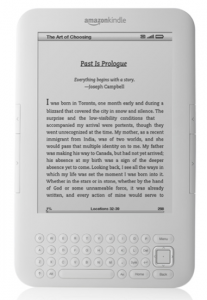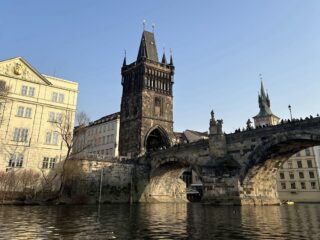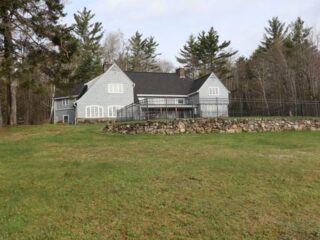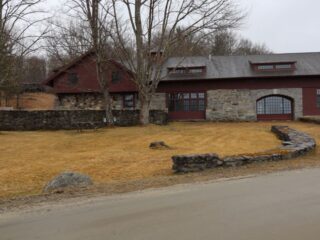by Robin Graham
I dreamt of my mentor, Shaykh Mustafa Abd al-Raziq
when he was the head of al-Azhar.
As he entered the main office, I rushed to catch up with him,
offering my hand in greeting. Walking along with him,
inside I saw a sprawling, spectacular garden. He told me
that he had planted it himself – half with native roses,
the other half with Western ones.
He hoped the two would give birth to a wholly new kind –
in form perfect, and in fragrance, sublime.
~Dream 180, Dreams of Departure. Naguib Mahfouz.
We look up.
We’ve come in from the bright hot street and find ourselves below ground in the cool murk, gazing up. Stone pillars, high vaulted arches, an opening in one corner big enough for a bucket. It doesn’t look like a basement. It looks like a cathedral, a subterranean castle, a multi-storey crypt.
It doesn’t look like a basement because it isn’t; this is a water tank we’re standing in, craning our necks. It is a cistern, or sabil. It is huge and just one of many, bestowed to the city by an Ottoman benefactor, one of many himself.
When they talk about seeing the underbelly, they refer to the seedy parts of the city. This is Cairo’s, and whatever is seedy in Cairo is worn on its sleeve, above ground. You don’t expect to see such grace and benevolence buried. Upstairs, through the bucket hole, the water bowls face out onto the casbah, quenching centuries of thirst.
Back in the hot light. This was the stomping ground of Naguib Mahfouz, this stretch of street giving its name to the first book in his Cairo Trilogy, Bayn El Qasrayn. From its opening pages, Amina looked down at the cistern from behind the mashrabiyya mesh of her window. She had never walked the street. Her world was the home of her tyrannical husband, of Islam, of tradition. Her Cairo was wholly mediated by the geometries of mashrabiyya – the wooden lattice behind which the women of Amina’s world were hidden.
Again we look up.
There are windows opposite, Amina long gone from behind them, as the water is from the bowls behind us.
Islamic Cairo is an absurdly redundant term, used to denote just this medieval district, Husayn, and a few adjacent others; the casbah cleaves it, north to south. We go north, through the throng of brass and copper merchants, threading our way. Squeezed tight on the narrow thoroughfare, we pass the moonlit mosque, Al-Akhbar with its beautiful facade, and further on the magnificent El-Hakim, used by Napoleon for a storehouse, Saladin for a stable.
And so we stand beneath the arch of the Bab Al Futuh, one of the fortified gates to the city. It looks squat now that the original street is metres below the one we stand on. Here Amina’s husband, Al-Sayyid Ahmad, was humiliated, forced to dig through the night in the service of the British occupiers. A titan in his own world, he would never recover from the shame, or from the death of his son Fahmy, who perished fighting them. He, his patriarchy, and his world were all to recede. As his youngest son, Kamal, observes in the final book:
It was sad to watch a family age. It was hard to see his father, who had been so forceful and mighty, grow weak.
Inside the ramparts and the Bab Al Futuh is a world that Al-Sayyid Ahmad would still recognise, outside one that would be alien to him, a broad dusty street congested with traffic, a symphony of car-horns and people on foot bearing all manner of unlikely loads through the exhaust fumes.
It’s chaos.
It’s Cairo.
We leave all that for later, returning south along Al-Gamaliya Street, which runs parallel with the casbah. We are deep in Mahfouz territory now.
We pass Qasr Al-Shooq (Palace of Desire) on our left, a little lane that gave its name to the trilogy’s second book. It is a continuing account of disappearance, tradition, certainty, and the milieu that built these streets.
This is not the casbah. Al-Gamaliya is more modest, lined with workshops for god knows what; the scooters, probably, that we need to sidestep – staying alert as they zip along. Winding our way south till we take a right, leaving the dirty street and the decay and the noise, we find ourselves in a haven, a harem; in the Bayt El Suhaymi, the finest remaining Ottoman residence in the city, Amina’s world in brick, mortar and mashrabiyya.
The Muslim home, no matter how wealthy, faces humbly on to the street. It is inside, from the courtyard that the details and comforts are revealed, and from here we can finally appreciate how people could live in the midst of the chaos, the crushingly claustrophobic midaqs, or alleys, the noise and bustle. This inner space is verdant, graceful, quiet and delightful.
To the eye, there is more mashrabiyya than masonry. This was a world so assured of its permanency that its morality was woven right into the fabric of a home like this. This world had no intention of changing with the times.
Though change with the times it did.
Taking a deep breath, as if we can store some of this peace in our lungs, we return to the noisy throng. Further south on Al-Gamaliya, we reach the mosque of Al-Husayn. The neighborhood is named for this edifice. Al-Husayn was the son of ‘Ali, the Prophet Muhammad’s son-in-law and the fourth and last of the ‘rightly guided’ caliphs. Husayn was to claim the caliphate, but he was killed at the Battle of Karbala in Iraq in 680, an event still commemorated by Shia Muslims today. Some say his head is buried beneath a shrine in this mosque. Others, of course, disagree.
Amina came here. Just the once. A passionate devotee of Al-Husayn, the shrine was to be transformed, for her, from the resting place of her revered patron into the symbol of the perils of her age. Her husband away on business, she emerged from behind her mashrabiyya to enter the holy shrine, a forbidden act for a woman of Al-Sayyid Ahmad’s household. Discovered, she was banished from her family and the house that was her world. Al-Sayyid Ahmad’s message was clear: messing with modernity is like playing with fire – someone will always get hurt.
There are prayers as we pass Al-Husayn so we limit ourselves to a peek from the doorway, the mosque’s interior carpeted and draped in the dark greens of Islam. On the other side of the street, in the warren-like maze of midaqsthat comprise the Khan Al Khalili, the world of the trilogy becomes disorientatingly entangled in the life of its author.
The Khan long predates the tourism that nowadays it caters to. Turn two corners and you are lost, at the mercy of hawkers and vendors of everything from precious gems to ginger, beautifully worked brass to belly-dancing accoutrements. You love it here, or you leave quickly. Cairenes are here too, for jewellery, spices and perfumes, and for the less gaudy apparel sold on Muski St. One of these lanes, some of them almost slits, is Qirmiz, where Mahfouz was born.
Everyone knows that tired shoppers need to sit and rest once in a while. The neighborhood has many ahwas and is perfumed with the scent of dark, spiced Arab coffee and the water pipe, or sheesha, that emanates from them.
When he was twelve, in 1924, the author’s parents moved out to one of Cairo’s suburbs, but as an adult he would constantly return to these midaqs and his beloved ahwas. His favourite, and the most renowned, is Al Fishawi, in whose ornate inner sanctum he would regularly meet with fellow writers and intellectuals, and where we now sit, fending off the hawkers, blind beggars and shoe polishers.
South of here, beyond the imposing mosque and university of Al-Azhar, the epicenter of Arab literature and Sunni learning, is Sugar Street, which gave its name to the final volume in the trilogy.
Sugar Streetis the account of a third generation, Amina’s grandchildren and the inheritors of their parent’s confused and disintegrating values. In conveying their different responses to a changed world, Mahfouz betrays a dark prescience that eventually cast its shadow into real life. In the face of increasing uncertainties, Abd al-Muni’im, a principal character, turns to his faith and becomes involved in the Muslim Brethren. He and his movement are seen as a threat by the authorities and the book culminates in his arrest.
In 1994 Naguib Mahfouz was stabbed in the neck in an attack by two Islamic militants. He survived the attack, but it was partially successful in that he never recovered full use of his writing hand, and his output following the stabbing was limited. In later years, he would dictate his dreams, which were published in the Egyptian press. It also meant that the gatherings in the ahwas of Khan Al Khalili, the Husayn district and elsewhere, so beloved of Mahfouz, came to an end. His crime was not something that he had written, but writing itself. The literary endeavor was viewed by the militants as a threat to the word of God. Mahfouz died in 2006.
Three years later, on the 22nd of February 2009, a bomb blast ripped through a row of tourist cafes just around the corner from Al Fishawi, in the square of the Al Husayn mosque, arguably Egypt’s most sacred Muslim site. A French woman was killed and dozens of tourists were injured. That the bazaar and its visitors were targeted came as no surprise. That the attack took place in sight of Al-Husayn was surely an affront to Muslims everywhere.
In the face of such butchery we struggle to trace a line from the enlightened Islam that gave rise in large part to this magnificent city – its monuments, libraries, universities and mosques – to the violent and twisted form of the religion espoused by those who perpetrate these atrocities. It is Amina’s world that they wish to recover, never mind that it wasn’t what it seemed, as it was rife with hypocrisy as any time or place.
The bombing was probably a response to Israel’s deadly initiative in Gaza the previous month. Palestinians died by the dozen as we sat here and sipped coffee in what was to become a murder zone. In our efforts to understand all of this death, it would be a great shame to bury any potential explanations from within. In the Cairo Trilogy, for example, a Sabil left to us by a benevolent mind, from which flows not water but context, insight and the wisdom from one of the 20th century’s great writers.
Today we sit in the square – more Arab coffee on the table in front of us. Al-Husayn is to our left, Al-Azhar on our right, and the hotel window from which the bomb was dropped is above us.
Once again, we look up.









